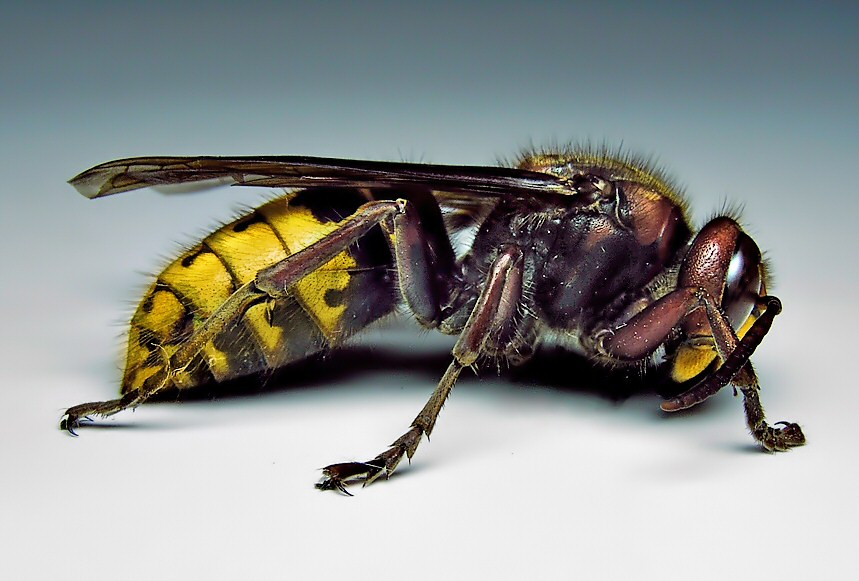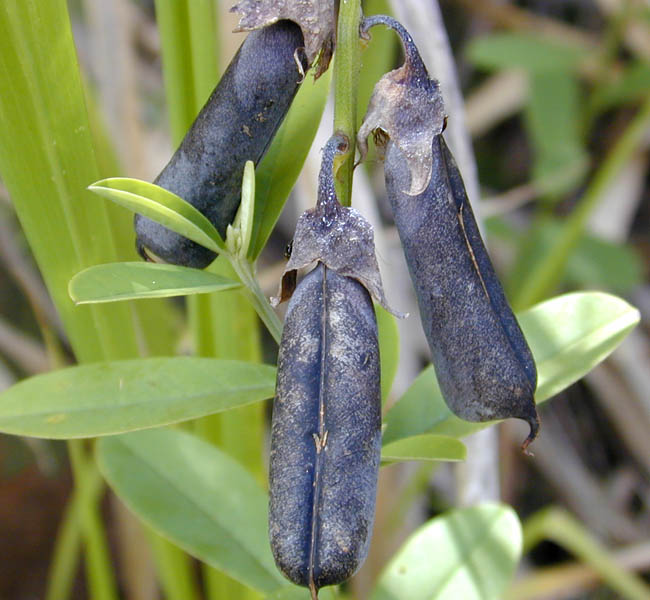|
Sexual Selection In Insects
Sexual selection in insects is about how sexual selection functions in insects. The males of some species have evolved exaggerated adornments and mechanisms for self-defense. These traits play a role in increasing male reproductive expectations by triggering male-male competition or influencing the female mate choice,Castillo, R. C. M ES PL C E O – PL C E O –. VI, and can be thought of as functioning on three different levels: individuals, colonies, and populations within an area.Sturtevant, B. Y. A. H. Essays on Evolution in Social Insects. On The Effects of Selection on Social Insects. 13, 74–76 (2013) Male mating tactics The amount of space accessible and the time both male and female usually determines the site of copulation. Many hymenopteran males constantly fly around specific sites, usually the tops of tall trees, summits, or along hedges, where approachable females are found as they can also be resources visited by females for the purpose of feeding. In honey bee ... [...More Info...] [...Related Items...] OR: [Wikipedia] [Google] [Baidu] |
Diptera
Flies are insects of the order Diptera, the name being derived from the Greek δι- ''di-'' "two", and πτερόν ''pteron'' "wing". Insects of this order use only a single pair of wings to fly, the hindwings having evolved into advanced mechanosensory organs known as halteres, which act as high-speed sensors of rotational movement and allow dipterans to perform advanced aerobatics. Diptera is a large order containing an estimated 1,000,000 species including horse-flies, crane flies, hoverflies and others, although only about 125,000 species have been described. Flies have a mobile head, with a pair of large compound eyes, and mouthparts designed for piercing and sucking (mosquitoes, black flies and robber flies), or for lapping and sucking in the other groups. Their wing arrangement gives them great maneuverability in flight, and claws and pads on their feet enable them to cling to smooth surfaces. Flies undergo complete metamorphosis; the eggs are often laid on the l ... [...More Info...] [...Related Items...] OR: [Wikipedia] [Google] [Baidu] |
Tree Hopper
Treehoppers (more precisely typical treehoppers to distinguish them from the Aetalionidae) and thorn bugs are members of the family Membracidae, a group of insects related to the cicadas and the leafhoppers. About 3,200 species of treehoppers in over 400 genera are known.Treehoppers. Dr. Metcalf. NCSU Libraries. North Carolina State University. They are found on all continents except Antarctica; only five species are known from Europe. Individual treehoppers usually live for only a few months. Morphology Treehoppers, due to their unusual appearance, have long interested naturalists. They are best known for their enlarged and ...[...More Info...] [...Related Items...] OR: [Wikipedia] [Google] [Baidu] |
Leaf Hopper
A leafhopper is the common name for any species from the family Cicadellidae. These minute insects, colloquially known as hoppers, are plant feeders that suck plant sap from grass, shrubs, or trees. Their hind legs are modified for jumping, and are covered with hairs that facilitate the spreading of a secretion over their bodies that acts as a water repellent and carrier of pheromones. They undergo a partial metamorphosis, and have various host associations, varying from very generalized to very specific. Some species have a cosmopolitan distribution, or occur throughout the temperate and tropical regions. Some are pests or vectors of plant viruses and phytoplasmas. The family is distributed all over the world, and constitutes the second-largest hemipteran family, with at least 20,000 described species. They belong to a lineage traditionally treated as infraorder Cicadomorpha in the suborder Auchenorrhyncha, but as the latter taxon is probably not monophyletic, many modern autho ... [...More Info...] [...Related Items...] OR: [Wikipedia] [Google] [Baidu] |
Cicada
The cicadas () are a superfamily, the Cicadoidea, of insects in the order Hemiptera (true bugs). They are in the suborder Auchenorrhyncha, along with smaller jumping bugs such as leafhoppers and froghoppers. The superfamily is divided into two families, the Tettigarctidae, with two species in Australia, and the Cicadidae, with more than 3,000 species described from around the world; many species remain undescribed. Cicadas have prominent eyes set wide apart, short antennae, and membranous front wings. They have an exceptionally loud song, produced in most species by the rapid buckling and unbuckling of drumlike tymbals. The earliest known fossil Cicadomorpha appeared in the Upper Permian period; extant species occur all around the world in temperate to tropical climates. They typically live in trees, feeding on watery sap from xylem tissue, and laying their eggs in a slit in the bark. Most cicadas are cryptic. The vast majority of species are active during the day as adults, ... [...More Info...] [...Related Items...] OR: [Wikipedia] [Google] [Baidu] |
Neuropterida
The Neuropterida are a clade, sometimes placed at superorder level, of holometabolous insects with over 5,700 described species, containing the orders Neuroptera (lacewings, antlions), Megaloptera (alderflies, dobsonflies), and Raphidioptera (snakeflies). Historically, they were known as Neuroptera, but this name nowadays refers to lacewings and their relatives (''e.g.'' antlions) only, which formerly were known as Planipennia. Part of the Endopterygota and related to beetles, they can be considered an unranked taxon. Arguably, the Endopterygota might be considered an unranked clade instead, and be divided into numerous superorders to signify the close relationships of certain endopterygote groups.Haaramo, Mikko (2008): Mikko's Phylogeny ArchiveNeuropterida Version of 11 March 2008. Retrieved 5 May 2008. The Mecoptera (scorpionflies) were formerly included here too by some authors, but they actually belong to the Mecopteroidea (or Antliophora), the endopterygote clade containing ... [...More Info...] [...Related Items...] OR: [Wikipedia] [Google] [Baidu] |
Firefly
The Lampyridae are a family of elateroid beetles with more than 2,000 described species, many of which are light-emitting. They are soft-bodied beetles commonly called fireflies, lightning bugs, or glowworms for their conspicuous production of light, mainly during twilight, to attract mates. Light production in the Lampyridae is thought to have originated as an honest warning signal that the larvae were distasteful; this was co-opted in evolution as a mating signal in the adults. In a further development, female fireflies of the genus ''Photuris'' mimic the flash pattern of ''Photinus'' species to trap their males as prey. Fireflies are found in temperate and tropical climates. Many live in marshes or in wet, wooded areas where their larvae have abundant sources of food. While all known fireflies glow as larvae, only some species produce light in their adult stage, and the location of the light organ varies among species and between sexes of the same species. Fireflies ha ... [...More Info...] [...Related Items...] OR: [Wikipedia] [Google] [Baidu] |
Photuris Lucicrescens
''Photuris'' is a genus of fireflies (beetles of the family Lampyridae). These are the ''femme fatale'' lightning bugs of North America. This common name refers to a behavior of the adult females of these predatory beetles; they engage in aggressive mimicry, imitating the light signals of other firefly species' females to attract, kill, and eat the males. Their flashing bioluminescent signals seem to have evolved independently and eventually adapted to those of their prey, mainly unrelated Lampyrinae, such as ''Photinus'' (rover fireflies) or ''Pyractomena''. Species At least 64 species are currently recognized, all restricted to temperate North America. They mainly occur from the East Coast to Texas. Species include: *' – Barber, 1951 *''Photuris bethaniensis''– McDermott, 1953 *' – Barber, 1951 *' – Barber, 1951 *'– LeConte, 1852 *'– LeConte, 1852 *'' Photuris fairchildi''– Barber, 1951 *'– Fall, 1927 *''Photuris floridana'' &nd ... [...More Info...] [...Related Items...] OR: [Wikipedia] [Google] [Baidu] |
Utetheisa Ornatrix
''Utetheisa ornatrix'', also called the bella moth, ornate moth or rattlebox moth is a moth of the subfamily Arctiinae. It is aposematically colored ranging from pink, red, orange and yellow to white coloration with black markings arranged in varying patterns on its wings. It has a wingspan of 33–46 mm. Moths reside in temperate midwestern and eastern North America as well as throughout Mexico and other parts of Central America. Unlike most moths, the bella moth is diurnal. Formerly, the bella moth or beautiful utetheisa of temperate eastern North America was separated as ''Utetheisa bella''. Now it is united with the bella moth in ''Utetheisa ornatrix''. The larvae usually feed on ''Crotalaria'' species, which contain poisonous alkaloid compounds that render them unpalatable to most predators. Larvae may prey on other bella moth larvae in order to compensate for any alkaloid deficiency. The bella moth also demonstrates complex mating strategies and is thus an excellent ... [...More Info...] [...Related Items...] OR: [Wikipedia] [Google] [Baidu] |
Queen (butterfly)
The queen butterfly (''Danaus gilippus'') is a North and South American butterfly in the family Nymphalidae with a wingspan of . It is orange or brown with black wing borders and small white forewing spots on its dorsal wing surface, and reddish ventral wing surface fairly similar to the dorsal surface. The ventral hindwings have black veins and small white spots in a black border. The male has a black androconial scent patch on its dorsal hindwings. It can be found in meadows, fields, marshes, deserts, and at the edges of forests. This species is possibly a close relative to the similarly colored soldier butterfly (or tropical queen, '' D. eresimus''), in any case, it is not close to the plain tiger ('' D. chrysippus'', African queen) as was long believed. There are seven subspecies. Females lay one egg at a time on larval host plants. Larvae use these plants as a food source, whereas adult butterflies feed mainly on nectar from flowers. Unpalatability to avian predators is a fe ... [...More Info...] [...Related Items...] OR: [Wikipedia] [Google] [Baidu] |
Pheromone
A pheromone () is a secreted or excreted chemical factor that triggers a social response in members of the same species. Pheromones are chemicals capable of acting like hormones outside the body of the secreting individual, to affect the behavior of the receiving individuals. There are ''alarm signal, alarm pheromones'', ''food trail pheromones'', ''sex pheromones'', and many others that affect behavior or physiology. Pheromones are used by many organisms, from basic unicellular prokaryotes to complex multicellular eukaryotes. Their use among insects has been particularly well documented. In addition, some vertebrates, plants and ciliates communicate by using pheromones. The ecological functions and evolution of pheromones are a major topic of research in the field of chemical ecology. Background The portmanteau word "pheromone" was coined by Peter Karlson and Martin Lüscher in 1959, based on the Greek φερω ''pheroo'' ('I carry') and ὁρμων ''hormon'' ('stimulating'). P ... [...More Info...] [...Related Items...] OR: [Wikipedia] [Google] [Baidu] |
Queen - Danaus Gilippus
Queen or QUEEN may refer to: Monarchy * Queen regnant, a female monarch of a Kingdom ** List of queens regnant * Queen consort, the wife of a reigning king * Queen dowager, the widow of a king * Queen mother, a queen dowager who is the mother of a reigning monarch Arts and entertainment Fictional characters * Queen (Marvel Comics), Adrianna "Ana" Soria * Evil Queen, from ''Snow White'' * Red Queen (''Through the Looking-Glass'') * Queen of Hearts (''Alice's Adventures in Wonderland'') Gaming * Queen (chess), a chess piece * Queen (playing card), a playing card with a picture of a woman on it * Queen (carrom), a piece in carrom Music * Queen (band), a British rock band ** ''Queen'' (Queen album), 1973 * ''Queen'' (Kaya album), 2011 * ''Queen'' (Nicki Minaj album), 2018 * ''Queen'' (Ten Walls album), 2017 * "Queen", a song by Estelle from the 2018 album ''Lovers Rock'' * "Queen", a song by G Flip featuring Mxmtoon, 2020 * "Queen", a song by Jessie J from t ... [...More Info...] [...Related Items...] OR: [Wikipedia] [Google] [Baidu] |

_(10144905255).jpg)





